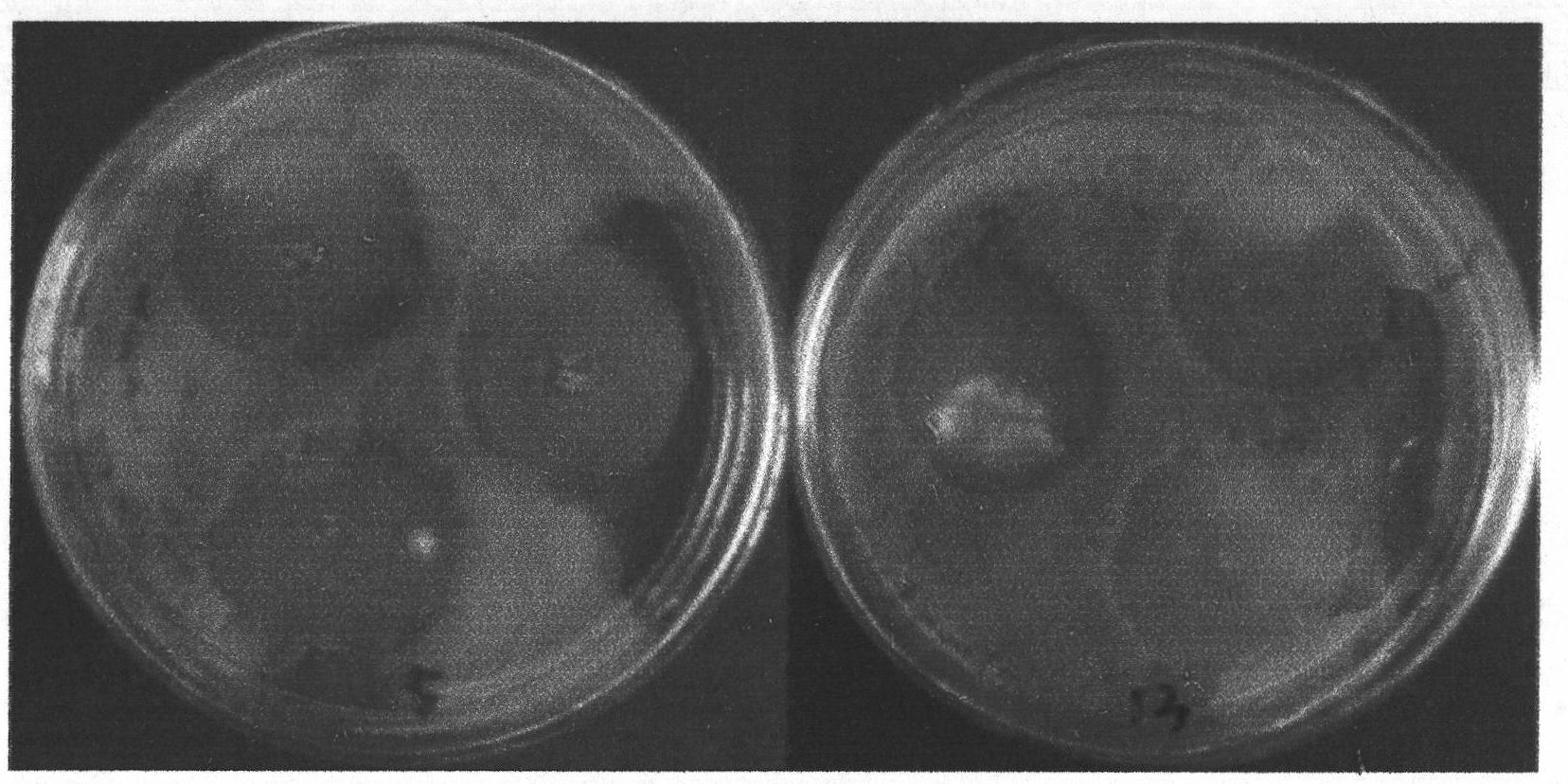Saccharothrix used for preventing and controlling tomato leaf mold and preparation method thereof
A technology of tomato leaf mold and saccharomyces, applied in the field of saccharomyces for preventing and treating tomato leaf mold and its preparation
- Summary
- Abstract
- Description
- Claims
- Application Information
AI Technical Summary
Problems solved by technology
Method used
Image
Examples
Embodiment 1
[0034] Embodiment 1: Isolation and identification of Hhs.015 bacterial strain
[0035]Cucumber roots were collected from vegetable greenhouses in Yangling High-tech Demonstration Zone, Shaanxi, rinsed with tap water, and then dried. Take 1 g of the root samples of the plants and carry out surface disinfection (immerse in 99% ethanol for 1 min, then soak in 3.125% NaOCl). 6min, put it into 99% ethanol again for 30sec, and finally rinse it with sterile water for 5 times). Take 200 μL of the sterile water that has been rinsed for the last time and spread it on the Gaoshi No. 1 plate to test whether the surface disinfection is thorough. The decontaminated materials were cut into 0.5×0.5mm thin slices with a sterile scalpel, and the surface-sterilized cucumber root tissue pieces were placed on a Gaoshi No. 1 plate, cultured in an incubator at 28±1°C for 21 days and counted The number of Saccharomyces colonies was purified and the Hhs.015 strain could be isolated, and the obtained ...
Embodiment 2
[0046] Embodiment 2: the preparation method of Hhs.015 bacterial strain thalline
[0047] Inoculate the Saccharomyces yangling Hhs.015 strain preserved at -80°C on Gao’s No. 1 medium, culture it at 28°C for 4 days, inoculate its single colony into 100mL soybean flour liquid culture medium, and inoculate it at 28°C, 150rpm in the dark Shake culture for 48 hours, then inoculate 100mL soybean flour liquid culture solution according to 1% seed liquid, shake and culture in the dark at 28°C and 150rpm for 120h, centrifuge the fermentation liquid at 5000rpm for 20min, and the precipitate obtained is Saccharomyces yanglingensis Hhs .015 strain of bacteria.
[0048] Described soybean powder liquid culture solution is made of soybean powder 20g (boiled in water for 30min, filter and retain the filtrate), sucrose 10g, soluble starch 5g, peptone 2g, yeast extract 2g, NaCl 2g, CaCO 3 1g, MgSO 4 ·7H 2 O0.5g, KH 2 pO 4 0.5g, agar 15g, H 2 O 1000mL composition, and the pH value is 7.2. ...
Embodiment 3
[0049] Embodiment 3: the preparation method of the antibacterial active substance of Hhs.015 bacterial strain
[0050] Inoculate the Saccharomyces yangling Hhs.015 strain preserved at -80°C on Gao’s No. 1 medium, culture it at 28°C for 4 days, inoculate its single colony into 100mL soybean flour liquid culture medium, and inoculate it at 28°C, 150rpm in the dark Shake culture for 48 hours, then inoculate 100 mL of soybean flour culture solution with 1% seed liquid, shake and culture in the dark at 28°C and 150 rpm for 120 hours, centrifuge the obtained bacterial liquid at 5000 rpm for 20 minutes, and then concentrate the supernatant obtained.
PUM
 Login to View More
Login to View More Abstract
Description
Claims
Application Information
 Login to View More
Login to View More - R&D
- Intellectual Property
- Life Sciences
- Materials
- Tech Scout
- Unparalleled Data Quality
- Higher Quality Content
- 60% Fewer Hallucinations
Browse by: Latest US Patents, China's latest patents, Technical Efficacy Thesaurus, Application Domain, Technology Topic, Popular Technical Reports.
© 2025 PatSnap. All rights reserved.Legal|Privacy policy|Modern Slavery Act Transparency Statement|Sitemap|About US| Contact US: help@patsnap.com



